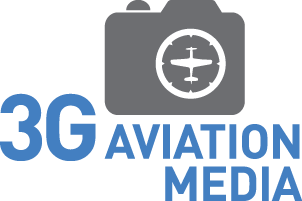Nikon Z7 Air to air
A week ago, I finished a 3 flight evaluation of the new Nikon Z7 mirrorless camera. I had the opportunity to use the camera while flying in the backseat of a T-6, along with shooting it from the ramp of a Shorts Skyvan. I’ll cut to the chase and say that I was very impressed with the camera, even though I did experience several issues that I was not expecting.
Wait a minute - how did I not expect these issues, as there have been reviews of the Nikon Z7 flooding the Internet over the past month?
Simple - I purposely did NOT read any of them.
Okay, a bit of quick background - I really don’t care about a wedding shooter, or a wildlife photographer telling me about how a camera works in their hands. If you have shot air to air photography, you know that the combination of environmental factors, physiological stressors and constantly changing light make for a unique shooting environment. Plus, I’ll be honest, I’m done with fanboys and nay-sayers, and it seems that most reviewers on the internet want to fall into one of those two categories.
So back to the flights!
First flight was two T-6 Texan aircraft with a photographer in each of them, shooting Nikon Z7s with the new Z-series 24-70mm lens.
The lead T-6 turns over the lakes south of Kissimmee as my fellow photographer shoots back at us with a Nikon Z7
The flight was only 45 minutes but provided an opportunity for me to be impressed with the Z7’s image quality, as well as to prove that I needed more practice with the Z7’s menus. If you have read any of my comments about the Z7 elsewhere, you know one of the features that I both love and hate are the new menus! The “menu” page is still arranged as a Nikon-standard menu, but the “Info” page has a series of options that used to either be buttons on the D-series DSLRs, or were secondary options. Check these or they will bite you!
Me, shooting from the backseat of the T-6, captured by our first time air to air photographer using a Z7!
Using the Z7 in the T-6 cockpit was easy and thankfully the lens barrel doesn’t extend too far
I did experience one major issue while using the Z7 during this flight. I’ve used AF-C Single point for years (and over 1500 flight hours) with a variety of Nikon DSLRs. It has been my go-to mode for ensuring I can place the focus exactly where I want - and not have to trust the camera to think for me. When zoomed in to 70mm, and using AF-C Single point, if the focus shifted off of the aircraft, the system would lose focus lock, defocus and hunt for the correct focus. It only happened at 70mm, and only when moving to a lower contrast area. When using it at a focal length shorter than 70mm, the lens would just shift focus to the new low-contrast area the single focal point was on. I duplicated the issue on the ground - and as a result shifted to Auto-Area for my second flight.
The next day a bunch of us photographers launched on a photo mission, shooting from the ramp of a Shorts Skyvan. As I would be shooting from behind the photographers, and trying to isolate subjects in formation, I opted to take along a Nikkor 70-200mm with the FTZ adapter as my primary lens.
The Z7 worked flawlessly, with Auto-Area mode working better than I had ever experienced with a Nikon camera. I had previously sworn off of using Auto-Area modes due to the focus points jumping around too much. With stable subjects flying formation behind the Skyvan, the camera was able to keep up and it even achieved face-tracking on several of the pilots - a great capability for those “hero shots” that everyone seems to like.
Our Nanchang CJ-6 subject closes in on the camera ship
So what was my overall view of the Z7? Just like any fighter-style debrief there were some “Goods” that need to be recognized and there were some “Others” that need to be worked on.
Good
Great image quality
Z-series lenses are quite capable and FTZ adapter works well
Small size was great for small cockpits (T-6)
Other
Single Point AF issue at 70mm
Dual menu-structure under “Menu” and “I” buttons
There is a lot more info to come! I’ve used the Nikon Z7 for landscapes, air to air, night photography and portraiture - and I want to share my observations with you. Overall I’m impressed, but like any tool, photographers will have to adapt to it, and may even have to change some habit patterns (as I have with abandoning AF-C Single Point focus). The next post will discuss some of the learning curve for working with the Z7’s menus and settings - something photographers will just have to deal with when moving to the new Z-series.






